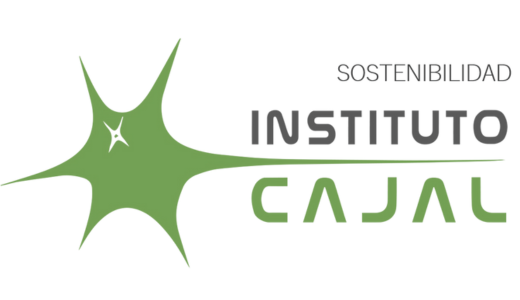INSTITUTO CAJAL
Sustainability
Sustainability

Sustainability Committee
Welcome to the Cajal Institute Sustainability Committee!
We are a group of scientific and technical staff committed to implementing and improving sustainable practices within the Cajal Institute. As research-related personnel, we are aware that scientific research leaves a huge environmental footprint. Laboratories use between 5 and 10 times more energy than office spaces and are estimated to produce 5.5 million metric tons of plastic waste each year. For more information, see the article ‘Labs should cut plastic waste too‘.

Mission
Our mission is to promote sustainability at the IC and implement work systems that reduce our environmental impact without compromising research, thus ensuring an effective commitment to environmental and biodiversity conservation. We believe that even small changes can make a significant difference. From reducing paper use to using energy-efficient equipment, we are committed to finding practical solutions that help us achieve our sustainability goals.
We encourage anyone at the Institute who is interested in making a green difference in their laboratory to contact a committee member. By working together, we can make a positive impact on the environment and build a more sustainable future for our Institute and the rest of society.
Thank you for your interest in our committee, and we look forward to working with you.
Sustainability goal
Our center has been incorporating sustainable initiatives at the IC for years. For example, recycling bins (paper and packaging) have been added to the building’s hallways and entrances, and the air conditioning has been set at a maximum of 27°C in the summer and a minimum of 19°C in the winter.
Our goal is to continue making improvements. To this end, we are working on a series of relatively simple proposals aimed at reducing our center’s carbon footprint and promoting greener practices. The three key areas are:
Waste Management
For example, reducing the amount of hazardous waste produced and increasing the amount of non-hazardous waste that can be recycled. This could include creating separate containers for non-hazardous recyclable waste in laboratories and common facilities.
Energy Conservation
For example, improving energy efficiency by changing the temperature and turning off more equipment when possible or when not in use.
Communicating our green efforts to the Institute
For example, improving the onboarding procedures for staff and students by providing them with information about sustainability at the IC.
Sustainability Tips and Resources
Below are some tips on how we can promote sustainability at the IC:
Material Reuse
• Some plastic materials, such as 15 or 50 ml Falcon tubes and MW6, MW12, or MW24 plates, that have not been used with dyes or highly viscous substances can be washed in the laboratory dishwasher and reused for experiments that do not require sterility.
• The aluminum foil used to prepare materials for autoclaving can be reused multiple times for the same purpose.
Proper Waste Disposal
• Recycling as much waste as possible and reducing the amount of waste destined for energy-intensive incineration is a crucial step toward sustainability.
• Following the correct waste disposal routes is also essential.
Energy Saving
• A significant portion of the energy consumed in the laboratory is due to the use of equipment, computers, and lights. To help reduce energy use, turn off all laboratory equipment, computers, and lights when finished using them.
• Be especially vigilant about equipment that consumes extremely high energy, such as biosafety cabinets.
• Close the chemical fume hood screen. Each fume hood can consume as much energy as 3.5 households per day. To reduce energy consumption, it is important to always close the chemical fume hood screen after use and keep it as low as possible when in use.
Use Sustainable Options for Laboratory Consumables
• Encourage the use of more sustainable options for laboratory consumables, such as refillable tip boxes and washable glassware whenever possible.
• Consult the ACT (Environmental Impact Label) database to choose consumables with the lowest environmental impact factor.
Maintain and regularly clean filters in -20°C refrigerators and freezers
• Regular maintenance, defrosting, and cleaning of filters in -20°C refrigerators and freezers are important steps to reduce energy consumption. It is also essential to remove old and unused items to prevent overfilling.
Sharing equipment, reagents, and consumables
• Sharing equipment, reagents, and consumables with other laboratories is an excellent way to prevent waste.
If you have any changes or ideas you would like to see implemented at the IC to improve our sustainability, we want to hear from you.
Committee Members
Aixa V. Morales García, Senior Scientist aixamorales@cajal.csic.es
Raúl Muñoz García, Technical Service Manager raulm@cajal.csic.es
Jaime Pignatelli Garrigós, Head of Omic Technologies Service jpigna@cajal.csic.es
Rubén Quintana Cabrera, Ramón y Cajal Scientist ruben.quintana@cajal.csic.es
María Rodríguez Muñoz, Senior Research Technician mrodriguez@cajal.csic.es
Useful contacts
Other Sustainability Committees

Neuroscience Research Center dependent on the CSIC. Founded in 1920 and initially directed by Santiago Ramón y Cajal. World reference in the study of the brain. Custodian of the Cajal Legacy.
Activities
